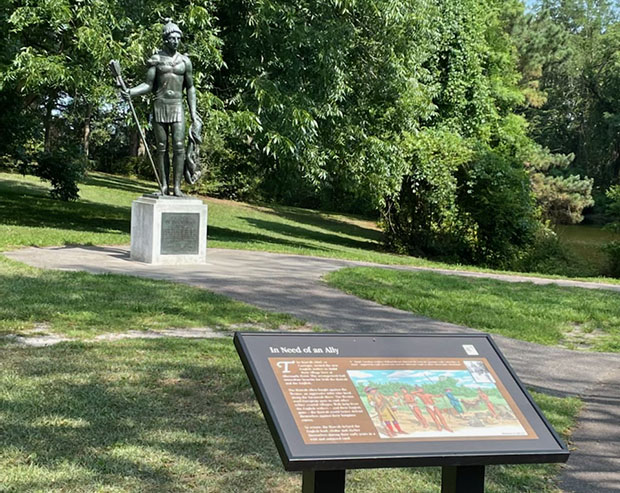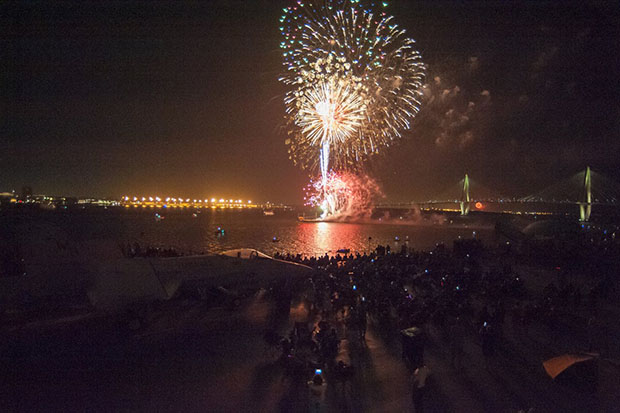A Road Trip Through History
05 Jul 2022
Dr. Henry Woodward’s journey with Carolina Indian tribes
By Tim Lowry

Recently, as I drove along a highway that cut between forest and swamp, I wondered what traveling through the Lowcountry landscape must have been like for previous generations. Precious little is known about the earliest days of our recorded history, but the story of a particular journey in 1674 titled “A Faithful Relation of My Westo Voyage” by Dr. Henry Woodward allows us to contrast and compare our own experience with those of earlier times.
In October of that year, a group of ten native tribesmen arrived at St. Giles Plantation on the banks of the Ashley River. They were seeking a meeting with one Dr. Henry Woodward, an explorer of the South Carolina coast in the mid-1600s who had lived among the local Cusabo people, learning their language and customs.
Having recently returned to the area with the first group of permanent English settlers, Dr. Woodward had established himself as the “go to” man for Indian trade and tribal relations. The Indian men did not speak English or a dialect of the Cusabo, but they made it clear through signs and body language that they wished for Dr. Woodward to accompany them on a journey into the interior of the colony. You might say this was the first invitation for a “road trip” from Charleston to Aiken, SC.
Traveling quickly at a sort of trot or half-run, the group followed well-marked trails through fields and deep forests. Dr. Woodward noted in his account that he read “signs” along the way, equivalent to the modern day roadside billboard, that depicted figures of men on horseback, a beaver and other figures carved into the sides of trees. He speculated as to the meaning of the signs, but one thing is for certain: they were not roadside advertisements for the native version of Cracker Barrel or gas stations. Traveling on foot meant that food and fuel were one in the same and free for the taking. They feasted on turkey, deer, and bear, which were readily available.
At night, they slept in quickly-fashioned lean-to shelters. There was certainly no Hampton Inn with a flashing vacancy sign. Dr. Woodward noted the uncomfortable sleeping conditions as he was required to lay down between two strong and capable warriors. This arrangement, it was made clear, was a matter of strict policy, no private rooms in this “hotel.”
If Dr. Woodward had trouble getting to sleep, he did not mention it in his account. However, if he did require something to ease his mind, there was no television showing reruns of Gunsmoke to encourage slumber. Instead, Dr. Woodward may have lain awake remembering stories he had heard.
The natives with which he was most familiar told him all kinds of stories. One seemed to be a version of a Noah’s Arc-like deluge. As the story was told, the whole world was covered in water and only a single man and woman were spared. They found upon the beach of the receding flood a dead redbird. When they picked up the dead bird, all of its feathers fluttered to the ground and each one turned into an Indian. This was the Cusabo origin story, an explanation of where they came from. They called themselves “people of the redbird.”
Another was the story of the “alligator people.” The Cusabo insisted that in previous times, their ancestors had been visited by a strange group of men who had long, scaly tails sticking out of their backsides. Dr. Woodward could easily dismiss such tales as “just some stories.” However, there was that one story, often told, that was not so easily explained away. Several tribes, not just the Cusabo, told tales about a rival group known as the Westo. In story after story, these fierce people were referred to as “skorrye” which was a Cusabo word that meant “frightening, dangerous, ferocious.”
Whenever the Westo were discussed, the conversation was held in serious whispers accompanied by sideways glances and nervous fidgeting. The stories varied in details, but all came to the same conclusion: The Westoes were to be feared because they were cannibals!
After a long journey, Dr. Woodward was escorted into a large native village that boasted a strong double palisade wall running along a river that served as a natural moat. Upon entrance to the fortified town, he was greeted by many well-armed and capable warriors who were eager to display their weapons and strength.
Sitting down with the leader of the town, Dr. Woodward did his best to communicate. Through a series of signs and broken verbal exchanges, he learned that indeed these were the mighty Westo and they wanted to establish a trade agreement with the newly-arrived English settlers. This proposal seemed good to Dr. Henry Woodward, but there were…those rumors.
He couldn’t help but wonder if the stories circulated about the Westo were believable, reliable, and/or worthy of consideration, not unlike a modern-day person trying to discern between the truth and “fake news” on talk radio. When he spoke of these concerns to the chief, the reply was essentially, “What, are we cannibals? No, that’s just the strategic placement of disinformation.”
Woodward would come to learn that the Westoes actually started the rumor about themselves and perpetuated the myth to keep their enemies in submissive fear. And, after that revelation, an alliance was formalized and trade was established between the English and the Westo.
As I think about it, my modern-day experience isn’t so different from Dr. Henry Woodward’s of three hundred years ago. We both traveled to Aiken, SC. I interpreted signs along the way, just like him. We both stopped along the “trail” for a bite to eat and slept in a bed less comfortable than our own. And just like Dr. Woodward, I met new people who put a spin on the same old stories. Hmm, the more things change, the more they stay the same.
Learn more about Dr. Henry Woodward and native Indian tribes with historical markers at the Charles Towne Landing Historical site at 1500 Old Towne Road in West Ashley. For more information, visit www.carolinaparks.com












